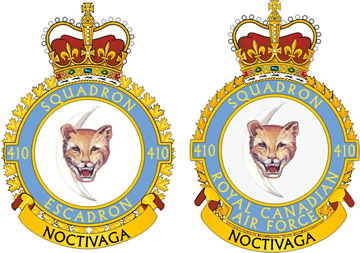Ming777
Monthly Donor
1960
With the 60's arriving, Avro Canada was taking in good business. With the first operational Arrow squadron entering service in the RCAF, they were now looking for more business. By now, the original aircraft were all finished. The RL prototypes were with the company, being used for further evaluation and test flights for potential clients. RC-213 to RC-224 were now with 425 Squadron. These were modified with the rear seat becoming the instructor's position, with further modifications including duplicated flight controls and a periscope for forward vision. RC-225 to RC-236 were standard Mark IIs and were delivered to 410 Squadron. The last four of the RC aircraft were also delivered to 425 squadron, serving as training aircraft for WSOs. Later, RL-209 to RL-212 will be also be delivered to 410 Squadron bringing the squadron to a full 16 plane level.
This was followed by the AQ series. These Arrows were modified with two cavities on the sides of the nose. These were built to accomodate M39 Cannons. AQ-241 to AQ-256 were being delivered to 409 Squadron, the first Western Canadain Arrow squadron, based in RCAF Comox, BC. AQ-257 to AQ-272 were being delivered to 414 Squadron in RCAF North Bay, Ontario.
In January, JASDF representatives arrived at the Malton facility to evaluate the aircraft. A few of the officers flew on the Training aircraft assigned to 425 Squadron. They were stunned by the speed and control response of the plane. The representatives were also informed about the potential of transforming the aircraft into a multirole plane, with plans underway to modify the ground-track radar for offensive purposes. In early February, RSAF officers and, secretly, a number of pilots from the Israelis were around the area, conversing with Avro Canada officials regarding the Arrow and its capabilities. The Israelis were split on buying the Arrow or the smaller, more nimble Mirage IIIs from France.
With the 60's arriving, Avro Canada was taking in good business. With the first operational Arrow squadron entering service in the RCAF, they were now looking for more business. By now, the original aircraft were all finished. The RL prototypes were with the company, being used for further evaluation and test flights for potential clients. RC-213 to RC-224 were now with 425 Squadron. These were modified with the rear seat becoming the instructor's position, with further modifications including duplicated flight controls and a periscope for forward vision. RC-225 to RC-236 were standard Mark IIs and were delivered to 410 Squadron. The last four of the RC aircraft were also delivered to 425 squadron, serving as training aircraft for WSOs. Later, RL-209 to RL-212 will be also be delivered to 410 Squadron bringing the squadron to a full 16 plane level.
This was followed by the AQ series. These Arrows were modified with two cavities on the sides of the nose. These were built to accomodate M39 Cannons. AQ-241 to AQ-256 were being delivered to 409 Squadron, the first Western Canadain Arrow squadron, based in RCAF Comox, BC. AQ-257 to AQ-272 were being delivered to 414 Squadron in RCAF North Bay, Ontario.
In January, JASDF representatives arrived at the Malton facility to evaluate the aircraft. A few of the officers flew on the Training aircraft assigned to 425 Squadron. They were stunned by the speed and control response of the plane. The representatives were also informed about the potential of transforming the aircraft into a multirole plane, with plans underway to modify the ground-track radar for offensive purposes. In early February, RSAF officers and, secretly, a number of pilots from the Israelis were around the area, conversing with Avro Canada officials regarding the Arrow and its capabilities. The Israelis were split on buying the Arrow or the smaller, more nimble Mirage IIIs from France.
Last edited:








